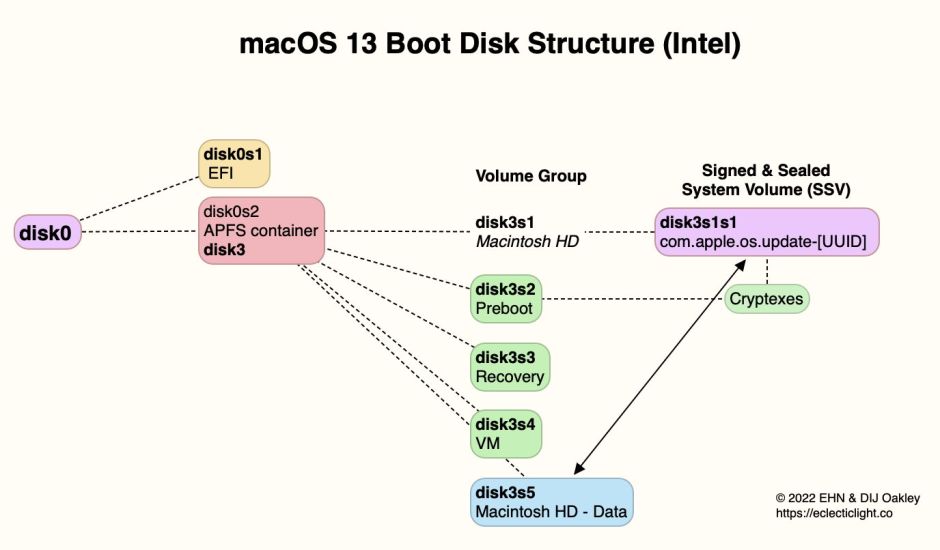Sonoma is the fourth major version of macOS to support Apple silicon Macs. At some time, it’s likely that the system run by Intel and Arm-based models will diverge, allowing Apple’s chips to break free from the limits remaining on older hardware. Is this starting to show yet in macOS 14?
If you’ve got an Intel and Apple silicon Mac both upgraded to Sonoma, there’s one sign that their system is different: open /System/Applications/Utilities and compare their apps.

Note that Boot Camp Assistant on Intel (above) is missing from Apple silicon (below).

This turns out to be nothing more than an illusion, though: on the Apple silicon Mac, press Command-Shift-. to show hidden files, and Boot Camp Assistant is still there, it’s just hiding. I’m not sure how Apple applies this conditional hiding, as Boot Camp Assistant doesn’t appear to use any of the normal methods of concealment, and only does so when viewed in the Finder on an Apple silicon Mac. Not only that, but for a utility that only works on Intel Macs, it’s quaint that Boot Camp Assistant is delivered as a Universal app, just in case you might feel like trying it out on your shiny new Studio Ultra.
I’ve now run comparisons on all the files found in /System/Library, and as far as I can tell, the Signed System Volume (SSV) of an Intel Mac with Sonoma 14.0 is identical in every respect to that in Apple silicon Macs with Sonoma 14.0. For Apple this has the benefit that the signature of every SSV should be exactly the same: thus, the macOS 14.0 SSV has only one valid signature, regardless of the architecture of the Mac.
For users, that means that a bootable system on an external disk should be bootable on either type of Mac, although that’s something I have yet to try.
This is in spite of the fundamental differences in container structure on their internal storage.

Unlike Intel Macs (above), Apple silicon Macs come with three containers (partitions) on their internal SSD, of which only one is used for the five volumes making up the boot volume group, as shown below.

Of course, no one can boot their Mac from the ‘wrong’ internal storage layout, and the structure of external boot disks is identical between architectures, and essentially the same as the Intel Mac’s internal SSD.
The only substantial differences lie outside the SSV, in Cryptexes loaded from disk, and in Rosetta 2, which is stored on the Data volume when installed on Apple silicon Macs.
There are differences in features and function, of course, but in the last three years and four major versions of macOS, Intel and Apple silicon Macs show few signs of divergence yet.
